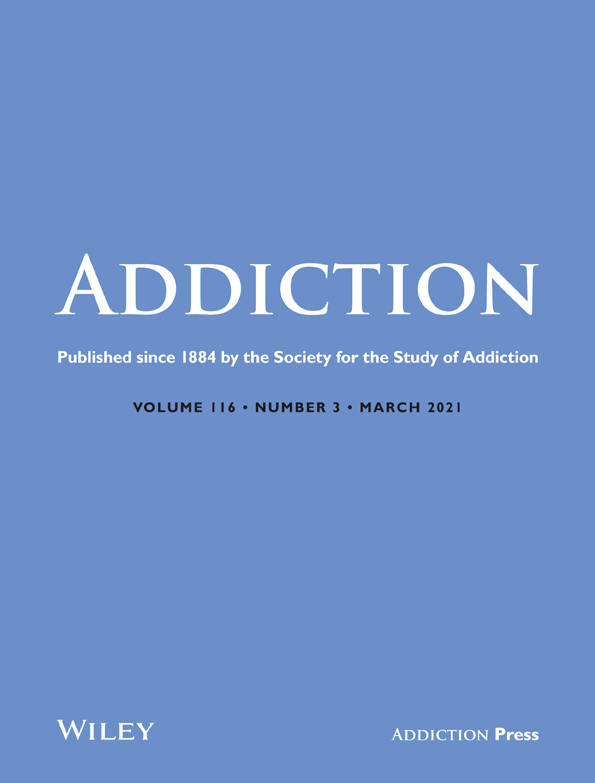Commentary on Furr-Holden et al. : As opioid overdose deaths accelerate among Black Americans, COVID-19 widens inequities—a critical need to invest in community-based approaches
The opioid overdose epidemic poses an unrelenting public health threat. Despite a slowing of overdose deaths in 2018, deaths in the United States increased in 2019 and are expected to reach record numbers in 2020 [1]. This increase disproportionately affects Black Americans, who now outpace white Americans in overdose death rates, according to new findings from Furr-Holden and colleagues [2]. Using Centers for Disease Control and Prevention data, the authors demonstrated that opioid overdose deaths among Black Americans began accelerating rapidly in 2012 and have not abated, increasing 26% from 2013 to 2018 relative to 13% among white Americans. The steepest increases in overdose deaths among Black Americans are observed in medium and small metropolitan areas [3]. This is evident in St Louis City and County, a medium-sized Midwestern metropolitan area that drives black overdose deaths in Missouri—the state with the third highest overdose death rate for Black Americans [4].The COVID-19 pandemic has exacerbated racial inequities in fatal opioid overdoses affecting Black Americans. To reduce overdose rates among Black Americans, funding and policy efforts should prioritize local strategies that build community trust, such as grassroots organizations engaged in outreach, advocacy, and harm reduction services.
The COVID-19 pandemic will probably exacerbate inequities in opioid overdose, as it has other inequities facing Black Americans [5]. However, as local health departments are overwhelmed by the pandemic, few data have detailed the impact of COVID-19 on racial inequities in overdose deaths. Recently obtained numbers from St Louis City and County Medical Examiners demonstrate expected COVID-19-related increases in opioid-involved deaths: between January and June 2020, deaths increased 53% relative to the same months in 2019 (251–383). Confirming fears of widening racial disparities, overdose deaths increased 64% among black people (119–195) relative to 40% among white people (129–180) during this period. These new figures are consistent with emergency service utilization data from other medium-sized metropolitan areas demonstrating increasing opioid overdoses during the pandemic [6], particularly among black individuals [7].
Prior to COVID-19, Black Americans faced structural barriers that limited access to effective addiction treatment (e.g., lack of insurance and transportation, mistrust of medical programs, and provider bias) [8]. These barriers, which contribute to lower rates of medication utilization for OUD among black people [9, 10], have been exacerbated by COVID-19-related strain [11, 12]. Further, efforts to mitigate the negative impact of COVID-19 on access to addiction treatment (e.g., increased availability of telemedicine) may provide less benefit to black people who, due to economic and structural inequities, lack consistent technology and internet access relative to white people [13].
Furr-Holden and colleagues rightly emphasized the importance of adopting equity-focused policies targeting locales with demonstrated disparities. This need is more urgent as Black Americans bear disproportionate health and economic consequences of COVID-19 [14, 15]. We propose that existing local efforts should receive funding priority, including grassroots organizations engaged in outreach (e.g., Baltimore City's Bmore POWER) [16]. Organizations presently engaged with black communities can engender awareness and trust of addiction services that community outsiders and traditional medical programs have difficulty producing [16, 17]. To effectively reduce the burden of overdose death among Black Americans, we must prioritize programs that build community trust. The cause is too urgent to continue on the present, too-familiar path.
Declaration of interests
None.
Acknowledgements
D.B.'s work was supported by the National Institutes of Health (National Institute of Drug Abuse) under grant R25 DA035692 (Principle Investigators: Milburn and Wyatt). C.W.'s and R.W's work was supported by the Substance Abuse and Mental Health Services Administration (Center for Substance Abuse Treatment) under grants 1H79SP022118, 1H79TIO80271 and 1H79TI082515 (awarded to Missouri Department of Mental Health). The content is solely the responsibility of the authors and does not necessarily represent the official views of the funders.
Author contributions
Devin Banks: Writing-original draft-Lead; writing-review & editing-Lead. Ryan Carpenter: Writing-original draft-Equal; writing-review & editing-Supporting. Claire Wood: Resources-Equal; validation-Equal; writing-review & editing-Supporting. Rachel Winograd: Resources-Lead; validation-Supporting; writing-review & editing-Supporting.




